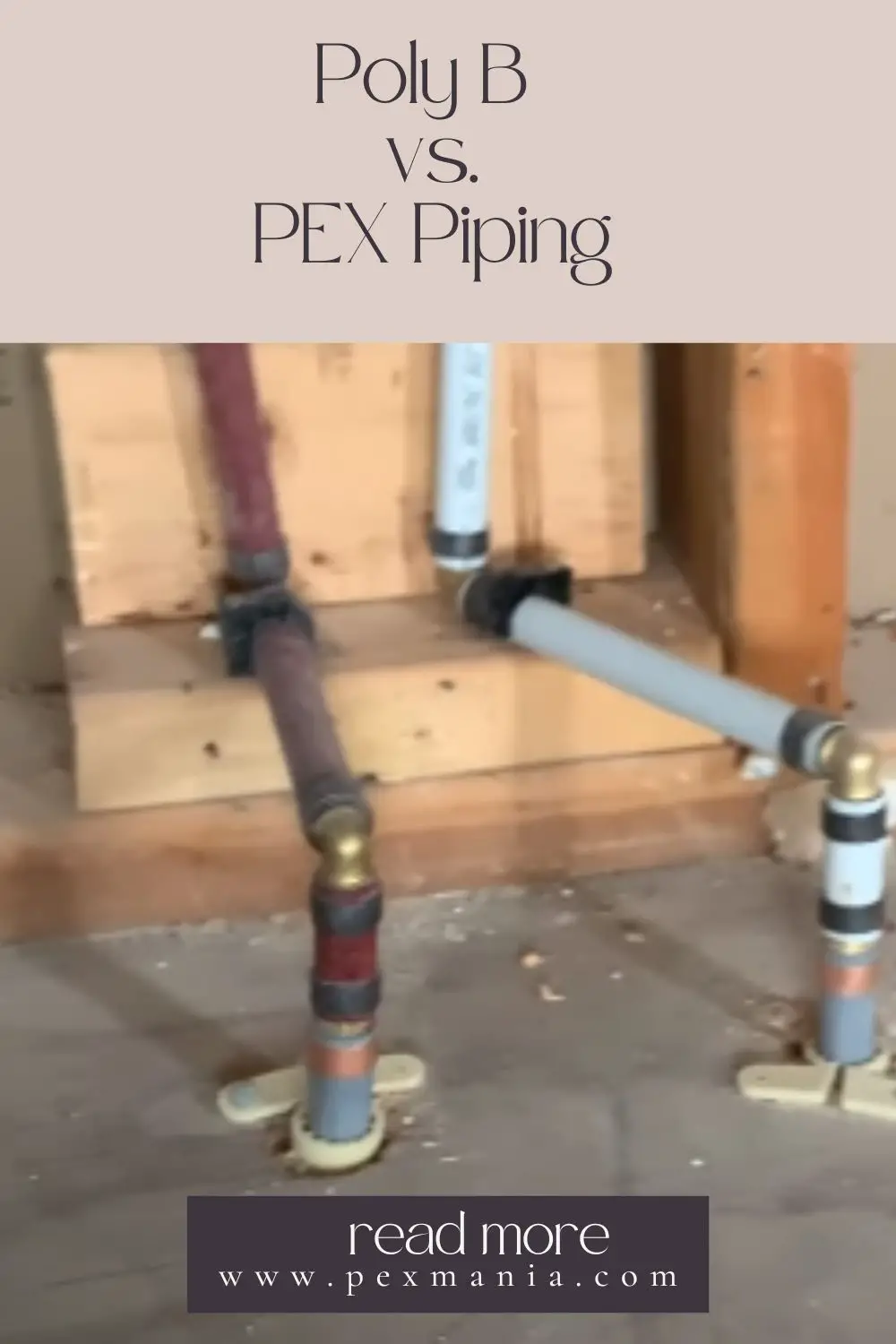Most people don’t bother to know the type of piping that has been installed in their homes. They are just fine with water flowing to all the appliances.
However, the situation is changing as there is an increased push to homeowners in Canada to switch from Poly B piping to the new PEX piping. There have been serious issues that have been associated with Poly B pipes over the years making PEX Pipes a go to option for all housing plumbing needs.
We have gone an extra mile and researched on the major differences between both piping systems and gave an expert opinion on why we strongly feel that moving to PEX from Poly B is the best idea for you.
Poly B To PEX Piping: When To Change
Poly B (or Polybutylene) is a plastic piping that comes in grey and black colors and it was very popular between 1978 and 1995 in construction works. If by any chance your home was built in this period, there is a high chance that the piping was done using Poly B pipes.
You cannot deny it that Poly B was a great invention in the plumbing industry then. However it is illegal in most states today. You can check out all the complications and issues associated with Poly B here.
What is the Issue with Poly B Piping?
Degrades Over Time
Once you have installed the Poly B tubing and water starts running in them, they start to corrode due to the exposure to oxygen. With time you will have issues with the pipes cracking and corroding from within. Eventually you will experience major water damage and leakage problems.
Personal Health Issues
Research has shown that people who consumed water from Poly B pipes has a higher risk to cancer and other congenital disabilities. It was concluded that the pipes leached chemicals into the water. Further research showed that the pipes molecules disintegrates and releases bisphenol-A also known as “BPA” which causes an increased risk to diseases.
Poly B Pipes are Heat Sensitive
When exposed to different temperatures, the poly b pipes expand and contract. This may cause the pipes to burst in areas that have varying temperatures like the attic.
Unavailability of Replacement Parts
Since the use of Poly B was banned in Canada, there are no shops or stores who supply any replacement parts. This makes it very hard and expensive to do a minor repair and it can take several days to months pending availability of parts.
These reasons have made many people to switch from Poly B to PEX PIPES.
Why Use PEX Piping Option?
People all over Canada and other states have turned to cross-linked polyethylene also known as PEX as the best alternative to Poly B. It is recommended by the International Association of Certified Home inspectors as the best option for home owners.
Pex has been tried over the years and it has been accepted widely for home construction. Here are key reasons why many people prefer using PEX.
Very Easy to Install
Compared to all other piping alternatives, PEX has proven to be very easy to install. There are home owners who actually do the installation by themselves as it needs very little technical skill. You do not use any soldering or gluing making it very cost effective too.
PEX is Flexible
The greatest advantage of Pex is that it is highly flexible and easy to install. Homeowners with frozen pipes too can use it as it is unlikely to crack.
PEX is Very Durable
Compared to Poly B, PEX more durable and it can withstand extreme conditions. The manufacturers give PEX a higher lifespan and it is unlikely to degrade over the years.
Safe Drinking Water Piping Alternative.
PEX has been approved as safe for drinking water by different organizations including FDA and NSF International.
Environmentally Friendly
The installation of PEX is more environmentally friendly when compared to Poly B. This is due to the fact that it is easy to install leaving very little carbon footprint.
Final Word
All homeowners are now switching to PEX piping from the traditional Poly B. The switch is giving them more safety and a higher durability and value for money.
If you love your peace of mind, you should prioritize fixing your plumbing system by installing pex piping. You can consult a professional PEX plumber and get all the insights you need before making the big switch.
Frequently Asked Questions.
Is PEX the same as Poly-B?
No, these are two different types of piping. The difference originates from their production where Poly-B is made from polybutylene while PEX is made from cross-linked polyethylene. PEX is a newer technology with more benefits and its popularity has been growing over the years.
Is it possible to use PEX rings on Poly-B?
Yes it is possible BUT NOT recommended as the two types of piping are not compatible. Such connections have a very high risk of leakage among other problems.
How Do I transition my home from Poly-B to PEX?
The most effective way to transition from polybutylene to PEX is to do an overhaul on the whole house. This will involve stripping all Poly -B from the house and replacing them with PEX.
You can also transition gradually if you are on a tight budget. The best area to start from is portions where the pipes are highly exposed like near drains and faucets and open areas like the attic. This will keep your system working before you can make the complete switch.
Remember to always consult an expert to get their views and valuable advice on what best suits your home.
